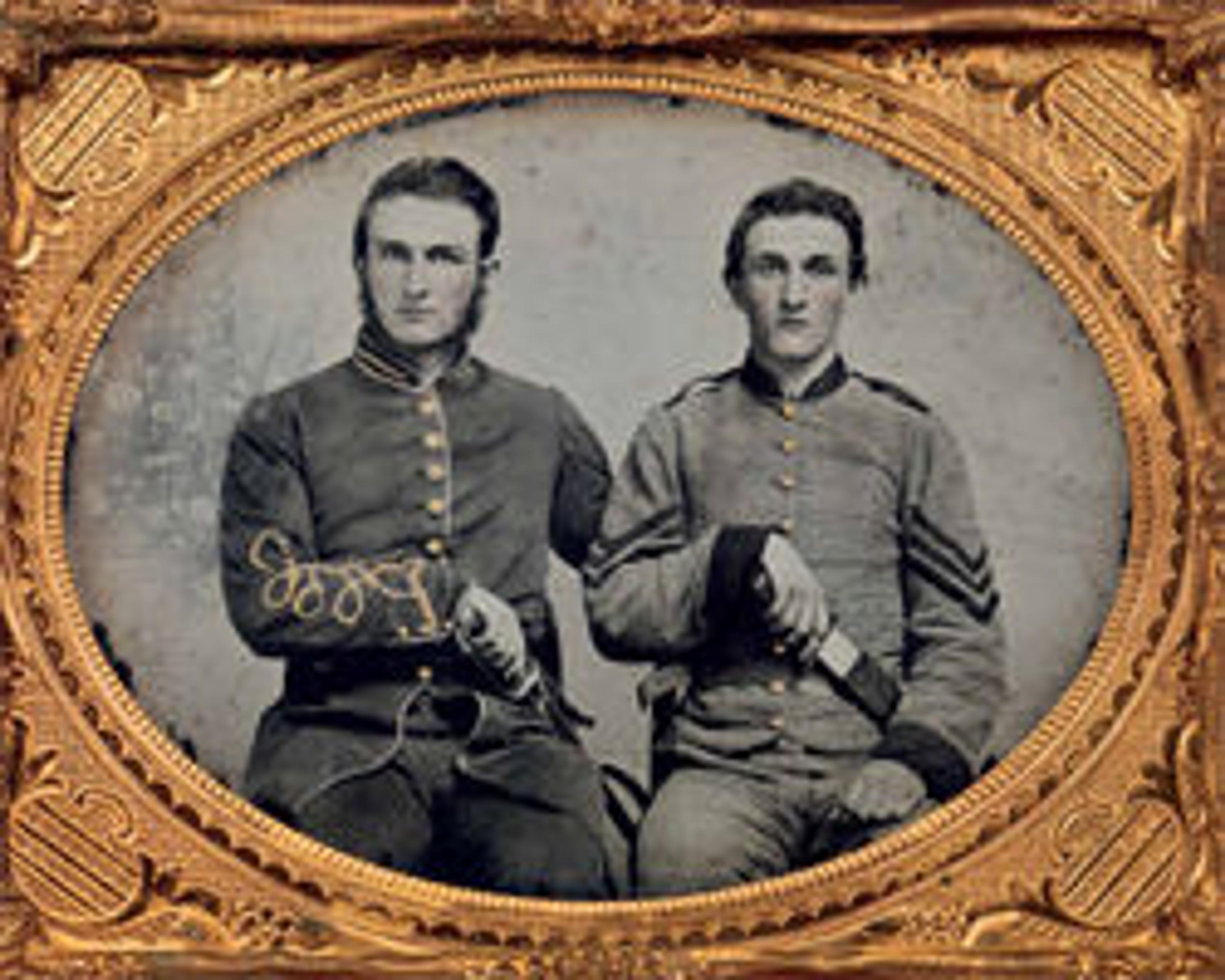Excised Knee Joint. A Round Musket Ball in the Inner Condyle of the Right Femur [Gardiner Lewis, Company B, Nineteenth Indiana Volunteers]
Presented like fragments of an ancient sculpture, this set of bones was the right knee of Union Private Gardiner Lewis, who was wounded in the battle of Gettysburg by a round musket ball. It is specimen number 1956 in the collection of the Army Medical Museum. Established in 1862 by order of President Lincoln, the Army Medical Museum—now the National Museum of Health and Medicine—is one of the most important scientific legacies of the Civil War. Its primary mandate was the collection of specimens for research in military medicine and surgery. During and after the war, museum curators solicited contributions from Union doctors—mostly in the form of photographs and patient histories such as those made by Reed Brockway Bontecou. The museum also employed its own photographers to record wounded soldiers, the effect of gunshot wounds and amputations, and its own growing collection of “morbid anatomy . . . together with projectiles and foreign bodies removed.”
Artwork Details
- Title:Excised Knee Joint. A Round Musket Ball in the Inner Condyle of the Right Femur [Gardiner Lewis, Company B, Nineteenth Indiana Volunteers]
- Artist:William H. Bell (American (born England), Liverpool 1831–1910 Philadelphia, Pennsylvania)
- Date:1866–67
- Medium:Albumen silver print from glass negative
- Dimensions:19 x 15.3cm (7 1/2 x 6in.)
Mount: 35.4 x 27.6cm (13 15/16 x 10 7/8in.) - Classification:Photographs
- Credit Line:Purchase, The Horace W. Goldsmith Foundation Gift, through Joyce and Robert Menschel, 1986
- Object Number:1986.1197
- Curatorial Department: Photographs
More Artwork
Research Resources
The Met provides unparalleled resources for research and welcomes an international community of students and scholars. The Met's Open Access API is where creators and researchers can connect to the The Met collection. Open Access data and public domain images are available for unrestricted commercial and noncommercial use without permission or fee.
To request images under copyright and other restrictions, please use this Image Request form.
Feedback
We continue to research and examine historical and cultural context for objects in The Met collection. If you have comments or questions about this object record, please contact us using the form below. The Museum looks forward to receiving your comments.
